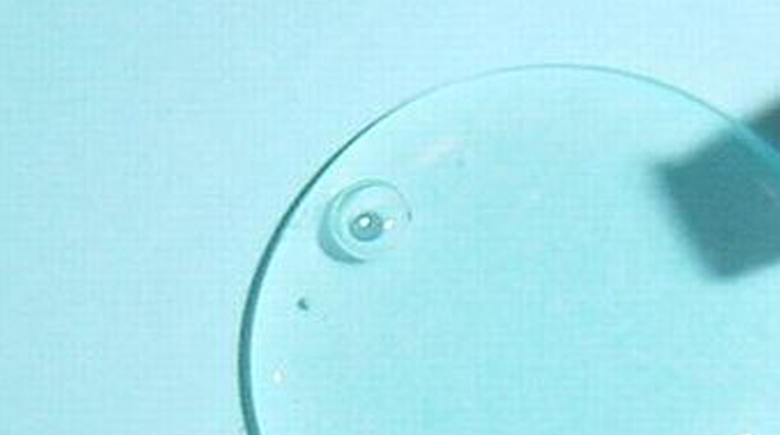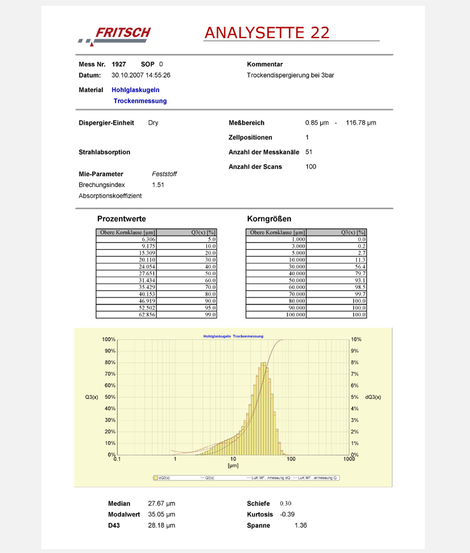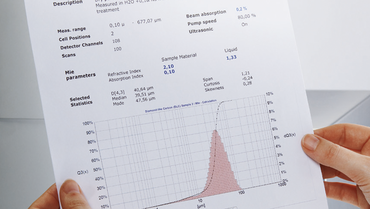Microscopic small glass spheres can be used for a multitude of applications: in mechanical engineering as an abrasion deterring element in grating components, in microelectronic mechanics as an adjusting aid and distancing element of electricity conducting single components, as a material for artistic surface design and much more.
A new adhesive system
An innovation in the area of large format graphic films is for example the so called Controltac adhesive system, with which the approximately 50 μm strong films are equipped in the meantime. Here, additionally to the adhesive, millions of microscopic small (40 up to 50 μm diameter) glass spheres in exact, regular arrangement are applied, which is achieved through the preceding micro structuring of the surface. The little glass spheres cause between the adhesive and the area to be adhered, a gliding effect, allowing the exact alignment of the foil. Only with stronger pressure, the spheres sink into the adhesive layer, which then can be permanently fixed to the base. This technology makes the adhering of large formatting foils possible in the first place.
Lighter materials
Another, new application constitutes a composite material of glass spheres and metal. The new material shines like solid metal and also feels that way. At the same time it is amazingly light. The trick: the metal is poured inside hollow glass spheres measuring 60 micrometers. Are the glass spheres homogenously distributed an even surface results, which feels completely smooth like metal. With an uneven distribution of the glass-share a new look is achieved. The material comes across as if it was marbled with veins. Even though the material is very porous, it looks smooth like metal and weighs only a fraction: so the density of aluminium of 2.7 grams per cubic centimetre is reduced to 1.2 grams per cubic centimetres. With zinc from 7 grams per cubic centimetres it is reduced to more than half, namely to 3.1 grams per cubic centimetre.
The measurement
The shown below particle size distribution of hollow glass spheres was achieved with the ANALYSETTE 22 (maximum measuring range: 0.1 – 2100 μm). Performed was the measuring with the use of the dry dispersion unit with an adjusted pressure at the Venturi injectors. Covered was the measuring range from 0.85 up to approximately 116 μm. During the evaluation of the measuring data the Mie-theory was applied, since especially in the area of smaller particle diameters for samples with a small refractive index, an already significant deviation of the calculation according to Fraunhofer is recognizable. For a comparison, also a distribution curve from the Fraunhofer approximation was drawn into the diagram.
-
Download the FRITSCH-report as PDF file
Material processing, composite materials, graphic films, lighting effects…





